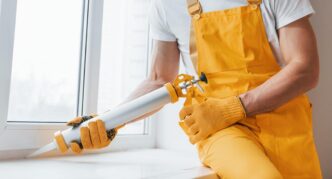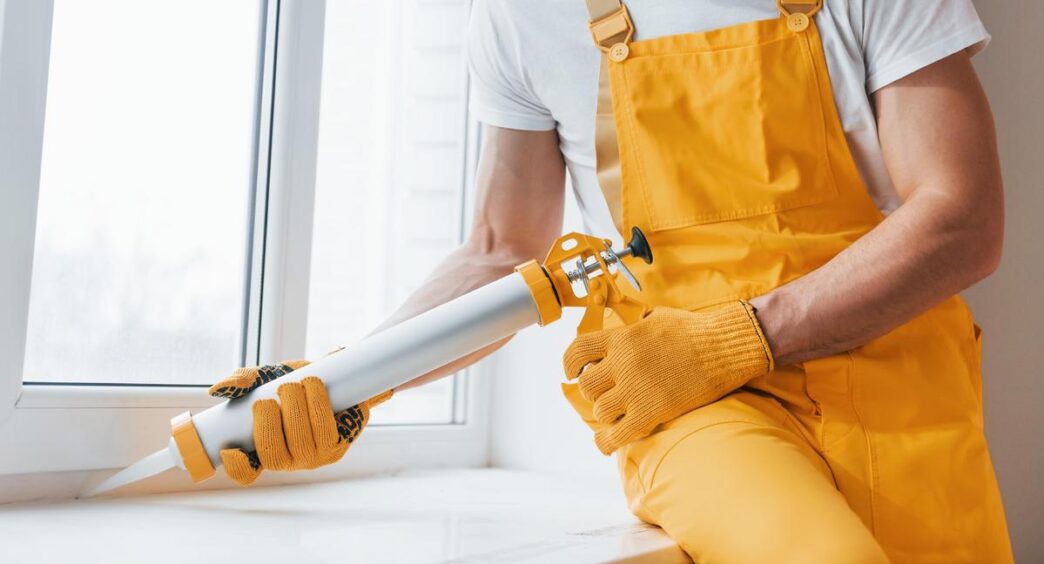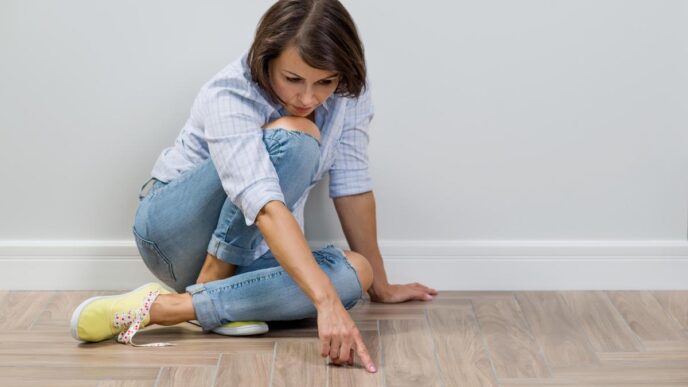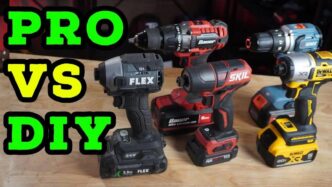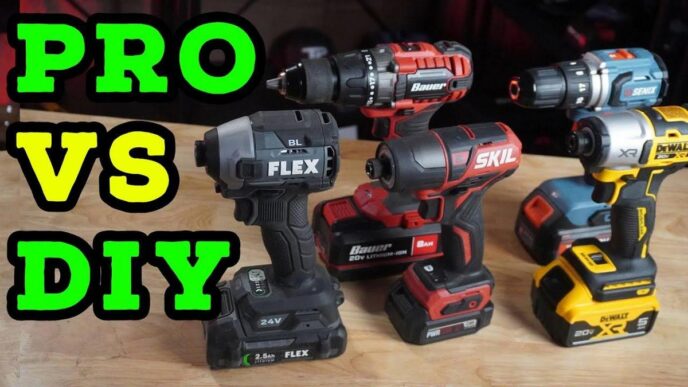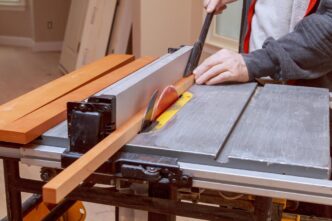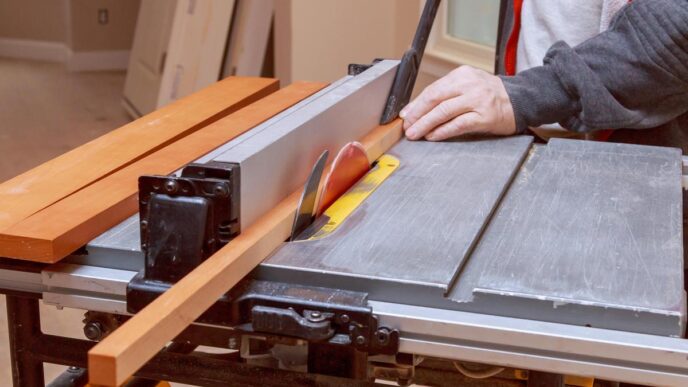Key Takeaways:
- Adhesive Types & Uses: Polyurethane glue, wood glue, construction adhesive, super glue, and epoxy serve different purposes.
- Polyurethane Glue: Best for multi-material sealing; expands and needs moisture to cure.
- Wood Glue: Ideal for wood, provides strong bonds; easy clean-up with water.
- Construction Adhesive: Strong, versatile for large projects; handles damp conditions.
- Metal Projects: Epoxy and polyurethane provide strong bonds.
- Ceramic Repairs: Super glue for quick fixes; epoxy for strength.
- Plastic Repairs: Use specific plastic adhesives; super glue for general purposes, polyurethane for tough tasks.
- Safety & Application: Ventilation, protective gear, surface preparation, and precise application are crucial.
- Adhesive Selection: Considers material compatibility, project scale, and durability needs.
Choosing the right glue can be the difference between a fixer-upper success and a sticky mess. Not all glues are made equal, and each has its special use. Is it wood, metal, ceramic, or plastic you’re working on? This guide will help you match the right adhesive to your repair job. You’ll learn about safety tips, application steps, and ensuring long-lasting results. Let’s begin your journey to repair like a pro!
What Are the Different Types of Adhesives and Their Uses?
When fixing things at home, picking the right adhesive is key. There are five main types of adhesives you should know about: polyurethane glue, wood glue, construction adhesive, super glue, and epoxy. Each has its own uses and benefits.
How Is Polyurethane Glue Best Utilized?
Polyurethane glue is unique because it works with moisture. It sticks different materials together well. A cool thing about it is that it expands two or three times its size when used. This makes it great for sealing edges. Before using, mist the surface with water, and then clamp it while curing.
What Makes Wood Glue Essential for Woodworking?
Wood glue is for wood only. It makes bonds stronger than the wood itself. If you like woodworking, this is your go-to. While wet, you can clean it with water. This makes it easy to tidy up your work.
Why Choose Construction Adhesive for Large Projects?
Construction adhesive is strong and versatile. It’s good for indoor and outdoor use. This adhesive can stick even if the surface is damp. A common use is to secure subfloors. For any big project, this adhesive is a winner.
Choosing the right adhesive helps you succeed in your project. Always read instructions and follow safety tips to ensure the best results. For more tips on using adhesives effectively, check out how a good adhesive can be a lifesaver.
Which Adhesive Should I Use for Specific Materials?
When tackling home repairs, choosing the right adhesive for each material is crucial. It ensures your repairs hold up over time and that you won’t need to redo them. Let’s explore the best adhesives for metal, ceramic, and plastic projects.
Which Adhesive Is Suitable for Metal Projects?
For metal projects, epoxy or polyurethane glue works best. I prefer these because they create strong bonds essential for holding metal pieces together. Epoxy is a solid choice as it is durable and can fill gaps between surfaces. Polyurethane glue, expanding as it dries, is ideal for mixed materials, and it bonds well with metal. Always ensure to clamp the pieces during curing for a reliable bond.
How to Choose the Correct Adhesive for Ceramic Repairs?
Ceramic repairs need careful handling. For these, super glue or epoxy are often preferred. Super glue sets quickly, making it perfect for quick fixes on small ceramic items. For larger pieces or where strength is a factor, epoxy is unbeatable. It needs mixing before application, but the bond once it sets can hold much better.
What Glue Works Best for Repairing Plastic Items?
With plastic repairs, consider using plastic-specific adhesives suited for this material. For everyday household plastics, super glue can work wonders. For more heavy-duty needs, a polyurethane-based adhesive provides a strong bond. Think about the type of plastic you’re working with; some glues specify which plastics they stick to better.
Choosing the right adhesive makes all the difference. Each material has its quirks, and knowing what works best saves time and trouble. Take time to match the adhesive to the task for the most reliable home repairs.
How Can You Ensure Safe Adhesive Use?
Ensuring safety when using adhesives is essential. What are the safety precautions for using adhesives? Always start with the right equipment and workspace setup. Choose a well-ventilated area to avoid strong fumes. Wear gloves to protect your hands and use goggles to shield your eyes.
How to prevent common application mistakes? Simple habits help. First, always follow the instructions on the label. Never rush the process. If clamping is required, like with polyurethane glue, ensure it’s secure. Keep a clean cloth nearby to wipe any excess quickly.
Why is understanding product labels crucial? Adhesive labels contain vital information. Know what materials the adhesive is suited for. Look for warnings. Some might not work in moist places or need extra care like proper ventilation. Always check for storage instructions. This ensures the product remains effective and safe. Understanding these aspects prevents mishaps and maximizes your adhesive’s performance.
What Are the Best Practices for Adhesive Application?
How to Prepare Surfaces for Optimal Adhesion?
Before using any glue, clean the surface well. Remove dust, dirt, and grease. Use water and soap for a good clean, then let it dry. If the material is rough, sand it lightly. This gives the glue a better grip. Use a cloth to wipe away any small bits left behind. Check out the Glue Genius Kit for tools that help prepare surfaces well.
What Are the Step-by-Step Instructions for Effective Application?
First, go over the glue’s instructions. Each type has its way. When ready, test the glue on a small spot. Apply the glue evenly, not too much. Press the items together. Hold them with tape, clamps, or even your hands. Wait for them to stick. Always read the glue label, as some need more drying time or even setting with heat or pressure. These steps help make sure you get the best stick.
How Do Setting and Curing Times Affect Results?
Setting means when the glue holds but isn’t strong yet. Curing is when the glue is fully dry and strong. They affect each bond’s strength. Wait for the glue to cure before using your fixed item. For example, super glue sets fast but needs more time to cure fully. Some glues, like epoxy, need a day to cure best. With knowing these times, repairs last longer and are stronger.
How Can Adhesive Selection Affect Durability and Versatility?
Why Is Durability Important in Adhesive Choice?
Choosing the right adhesive ensures long-lasting results. Durable adhesives stand the test of time. You’re looking for something that can handle wear and tear. For example, wood glue forms strong bonds in wood joints. These bonds often become stronger than the wood itself. And polyurethane glue is strong too and great for joining different materials. It expands when curing, offering extra hold.
How Versatile Can Adhesives Be in Home Repairs?
Versatile adhesives solve many home repair challenges. Multi-purpose adhesives, like construction adhesive, work indoors and outdoors. They stick even when surfaces are wet, like when securing subfloors. Super glue is handy for quick fixes, setting in 30 seconds. It’s great for small tasks where speed counts. Epoxy suits larger repairs, filling gaps and patching surfaces with a two-part system.
What Considerations Are Needed for Large-Scale Projects?
For big tasks, consider the project size. Large-scale jobs need strong bonds. Choose according to needs, like construction adhesive for hefty tasks. Wood glue fits wood-focused projects well. Consider project needs and material types when picking an adhesive. Using the right adhesive helps ensure a durable and lasting repair.
Conclusion
Understanding adhesives makes DIY projects easier and more successful. We explored different types of adhesives and their ideal uses, focusing on woodworking, ceramic, plastic, and metal. We’ve learned how to apply them effectively while ensuring safety. The right adhesive can add durability and adaptability to your projects. Remember, reading labels and preparing surfaces is crucial. By choosing wisely, your repairs and DIY tasks will be more reliable and strong. So, embrace the sticky world of adhesives and watch your projects come to life!
